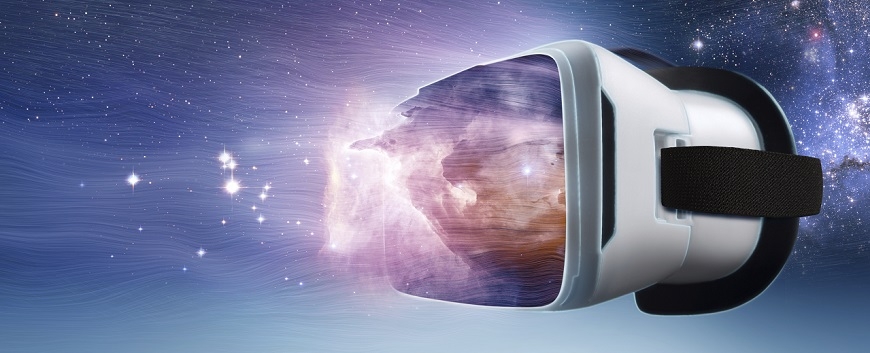5 Reasons Why Marketers Must Consider Virtual Reality
- Posted on Jul 12, 2016
- Annie Lyons
- 0 Comments
Virtual reality isn't new. It's been hyped for years as the next big thing. But something is different this year—consumers are finally on board. In fact, according to Greenlight VR's "2016 Virtual Reality Consumer Adoption Report" consumer interest in VR now goes well beyond games to include travel, tourism, or adventure (73.5 percent of consumers); movies and recorded videos (67.3 percent); live events (67.0 percent); home design (65.9 percent); and education (63.9 percent).
It's clear VR's ability to create an imaginary environment for the user is catching on. And now advertisers and marketers need to take advantage, evaluating opportunities across VR headsets, mobile apps, and 360 video.
Here are five reasons virtual reality is changing the advertising game:
-
Virtual Reality means big money.
Companies around the world are trying their hand on VR. According to Business Insider, virtual reality headsets were a 37 million dollar industry in 2015, but by 2020 they should be a 2.8 billion dollar market. Across industries, brands are jumping on the "virtual reality bandwagon" using the technology to make more engaging advertisements and even showcase new creative approaches for promotional events. For example, in Poland around Christmas 2015, Coca Cola created an immersive VR experience where users could fly Santa's sleigh. This is a great example of a fun and innovative way in which brands are using VR to connect with audiences without blatantly promoting the product itself.
-
Virtual Reality is interactive.
Virtual reality allows the consumer to create their story. It's the ultimate form of experiential marketing. In the past, companies utilized experiential marketing by setting up booths and product demoes. With VR experiential marketing is much easier—and more effective. By simply using a VR headset or 360 video, brands can create a virtual experience comparable to the actual experience they are trying to showcase. Marketers can not only sell a product, but an experience which will drive engagement and ultimately make the product more marketable and attractive to consumers.
-
Virtual Reality is becoming more accessible.
Virtual reality seems very high tech, but with the right strategy and skills, it's relatively easy for advertising agencies to create a 360 video and engage with their audience members on a new level. Google Cardboard is a prime example of the integration of VR as a staple household technology. Google Cardboard makes VR affordable for everyone; for only $15, anyone can enjoy the tools to make cardboard Google Goggles and with the help of their smartphone, experience virtual reality. In March of 2016, as part of a promotional event, McDonald's released the "Happy Goggles" in Sweden. Happy Goggles took the classic cardboard Happy Meal and allowed it to be shaped into a cardboard VR headset. With the Happy Goggles, consumers also had access to the VR app McDonald's created, Slope Stars. Coca Cola also has aided the normalization of VR by allowing their cardboard packaging to easily be folded into Virtual Reality Goggles. Although Coca Cola did not have an app to go with it, it can be assumed Coca Cola wanted consumers to have access to VR headsets for their advertising strategies in the future.
-
Virtual Reality allows content creators to tell a different story.
In regards to advertising, Virtual Reality allows audiences to go deeper and experience so many more aspects of of product. Instead of watching a car commercial, consumers are transported inside the car where they can take it for a spin going 0-70 mph in seconds. The benefits are endless and can't be understated when considering consumer's shrinking attention span—only 8.25 seconds before the average person is distracted and on to the next thing. With virtual reality, a consumer quickly becomes immersed in the story and even has opportunities to create their own story to their own liking, so it is almost impossible to get bored.
-
Big social media platforms are already supporting virtual reality.
Facebook partnered with Oculus VR to create Facebook 360, which allows users to watch and share 360 videos via Facebook. YouTube has 360 Videos and Google followed up the launch of Google Goggles with plenty of content. And this is only the beginning. Popular media platforms are not only publishing VR content, but increasingly consumers are looking for it—and of course, these digital channels mean likes, shares, follows and tremendous opportunities to expand audiences and deepen engagement.
Of course, beyond the technology, like all advertising, content is key. Marketers need a solid strategy in place that considers the target audience, style, and distribution. Many brands are turning to technology partners, like Snips VR360 Social Impact, to not only deliver the VR content across different platforms, including mobile, gaming, and VR headsets, but to also extend the reach by connecting with influencers to get the message out. There's no question VR is one of the hottest trends to follow this year. Are you ready to jump in?











